19 Different Types of Indian Dal and Their Health Benefits
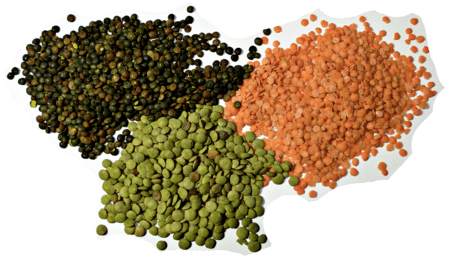
Indian cuisine is renowned for its diversity and depth, with a vast range of flavors, textures, and health benefits. Among these, dal plays a significant role as both a staple ingredient and a powerhouse of nutrition. Known for being protein-rich, easily digestible, and highly versatile, each type of dal brings unique flavors and health benefits to the table. In this guide, we’ll explore 19 different varieties of Indian dal, discussing their nutritional value, health benefits, and best ways to incorporate them into your diet.
19 Different Types of Indian Dal
Here, we will discuss 19 different types of dal, their unique properties, and the health benefits they offer.
| Type of Dal | Scientific Name | Health Benefits |
| Moong Dal (Green Gram) | Vigna radiata | High in protein, aids digestion, rich in antioxidants |
| Toor Dal (Pigeon Pea) | Cajanus cajan | Good source of fiber, helps in weight management |
| Chana Dal (Bengal Gram) | Cicer arietinum | Rich in protein, promotes heart health, stabilizes blood sugar |
| Urad Dal (Black Gram) | Vigna mungo | High in iron, aids digestion, improves heart health |
| Masoor Dal (Red Lentil) | Lens culinaris | Good for skin health, supports heart health, high in protein |
| Arhar Dal (Split Yellow Pigeon Pea) | Cajanus cajan | Rich in folate, aids in digestion, supports muscle health |
| Moth Dal (Matki) | Vigna aconitifolia | High in fiber, promotes weight loss, good for blood sugar control |
| Rajma Dal (Kidney Bean) | Phaseolus vulgaris | Rich in protein and fiber, helps in weight loss and heart health |
| Kabuli Chana (Chickpea) | Cicer arietinum | Good source of protein, aids in digestion, rich in vitamins |
| Kala Chana (Black Chickpea) | Cicer arietinum | High in fiber, supports weight loss, good for heart health |
| Horse Gram Dal | Macrotyloma uniflorum | Rich in protein and fiber, aids in digestion, helps manage diabetes |
| Black-Eyed Pea Dal (Lobia) | Vigna unguiculata | High in fiber, aids digestion, good for heart health |
| Soybean Dal | Glycine max | High in protein and omega-3 fatty acids, supports heart health |
| Green Pea Dal | Pisum sativum | Rich in vitamins A and C, good for skin health, aids digestion |
| White Pea Dal (Safed Vatana) | Pisum sativum | Good source of protein, supports heart health, aids digestion |
| Moong Chilka Dal (Split Green Gram) | Vigna radiata | High in protein and fiber, good for digestion, aids in weight loss |
| Adzuki Bean Dal | Vigna angularis | High in fiber, supports heart health, helps in weight management |
| Winged Bean Dal | Psophocarpus tetragonolobus | Rich in protein and vitamins, supports heart health |
| Masoor Whole Dal (Whole Red Lentil) | Lens culinaris | High in fiber, aids in digestion, supports heart health |
Now, let’s dive into the details of these different types of dal, each with its unique nutritional profile and health benefits. From protein-rich Moong Dal to fiber-packed Toor Dal, these lentils not only add flavor and texture to your meals but also provide essential nutrients to support a balanced diet. Discover how each type can enhance your health, aid digestion, and contribute to overall wellness, making them invaluable in traditional Indian cuisine and everyday meals alike.
1. Moong Dal (Green Gram)
Moong dal, or green gram, is one of the most commonly consumed lentils in India. It has a mild flavor and soft texture, making it an ideal choice for a variety of dishes. Moong dal can be enjoyed as a simple soup, in a hearty khichdi, or even in sweet preparations like moong dal halwa. Its light nature makes it easy to digest, which is particularly beneficial for those recovering from illness.
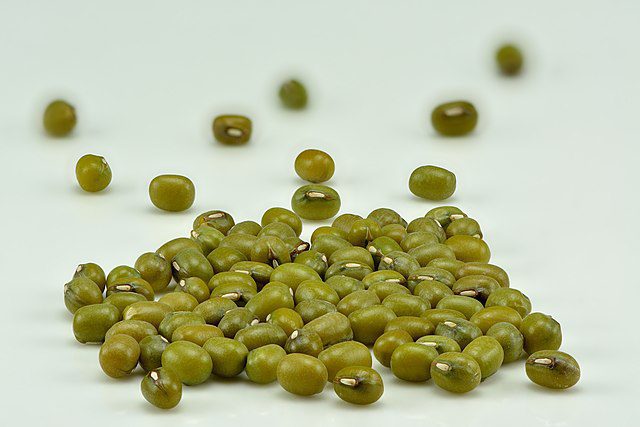
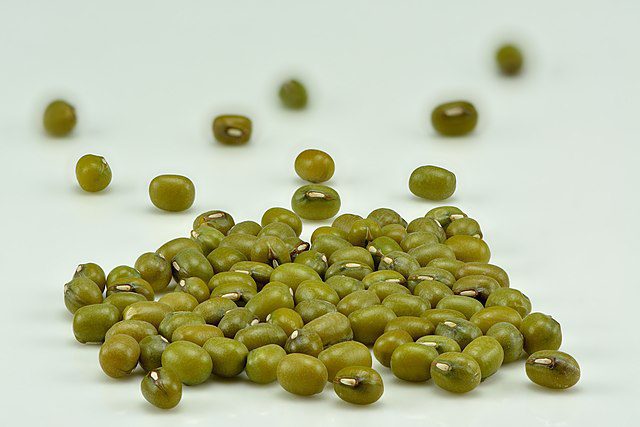
| Language | Name |
| Hindi | Moong Dal |
| Gujarati | Mag Dal |
| Bengali | Mug Dal |
| Tamil | Pasi Paruppu |
| Telugu | Pesara Pappu |
| Marathi | Muga Dal |
| Kannada | Hesaru Bele |
| Malayalam | Cherupayar Parippu |
| Punjabi | Moong Di Dal |
| Odia | Muga Dal |
Nutritional Table (per 100g):
| Nutrient | Amount |
| Protein | 24g |
| Carbohydrates | 60g |
| Dietary Fiber | 16g |
| Calories | 347 kcal |
| Iron | 6.7 mg |
| Potassium | 924 mg |
| Magnesium | 48 mg |
| Folate | 480 mcg |
Health Benefits:
- High in Protein: Moong dal is an excellent plant-based protein source, essential for muscle repair and growth.
- Rich in Antioxidants: Research indicates that moong dal has significant antioxidant properties that can reduce oxidative stress and inflammation in the body.
- Promotes Digestive Health: The high fiber content aids digestion, helps in maintaining regular bowel movements, and prevents constipation.
- Supports Weight Management: Being low in calories and high in fiber, it promotes satiety, helping with weight control.
“Hindustan Times also reported the many health benefits of consuming mung beans, noting their antioxidant properties that support overall wellness in the article Wonderful Health Benefits of Eating Moong Beans Every Day.”
2. Toor Dal (Pigeon Pea)
Toor dal, also known as pigeon pea, is a staple in Indian kitchens and a fundamental ingredient in many regional cuisines. Its slightly sweet and nutty flavor makes it versatile, allowing it to be used in various dishes such as sambhar, dal tadka, and puran poli. Toor dal is often split and hulled, which speeds up the cooking process. This dal is highly nutritious and easily digestible, making it a popular choice for everyday meals.
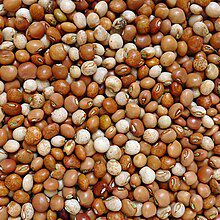
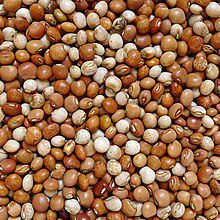
| Language | Name |
| Hindi | Toor Dal/Arhar Dal |
| Gujarati | Tuver Dal |
| Bengali | Tur Dal |
| Tamil | Thuvaram Paruppu |
| Telugu | Kandi Pappu |
| Marathi | Tur Dal |
| Kannada | Togari Bele |
| Malayalam | Thuvara Parippu |
| Punjabi | Toor Di Dal |
| Odia | Kandula |
Nutritional Table (per 100g):
| Nutrient | Amount |
| Protein | 22g |
| Carbohydrates | 64g |
| Dietary Fiber | 15g |
| Calories | 343 kcal |
| Iron | 5.7 mg |
| Potassium | 1392 mg |
| Magnesium | 130 mg |
| Folate | 114 mcg |
Health Benefits:
- High in Protein: Toor dal is a great plant-based protein source, essential for muscle repair and overall body growth.
- Rich in Dietary Fiber: The high fiber content aids in maintaining a healthy digestive system, preventing constipation, and promoting regular bowel movements.
- Supports Heart Health: Potassium in toor dal helps regulate blood pressure, while magnesium supports cardiovascular health. Additionally, its fiber content can help reduce bad cholesterol levels.
- Helps in Blood Sugar Management: The low glycemic index of toor dal makes it suitable for people with diabetes, as it helps in maintaining stable blood sugar levels.
- Promotes Weight Management: With its high protein and fiber content, toor dal helps promote a feeling of fullness, which can aid in weight management by reducing overall calorie intake.
3. Chana Dal (Bengal Gram)
Chana dal, also known as Bengal gram, is derived from the black chickpeas (kala chana) after removing the outer layer and splitting the kernel. It is widely used in Indian cuisine for its nutty flavor and firm texture. Chana dal is a versatile ingredient, perfect for making dals, soups, stews, and snacks like chana dal pakora. Its robust flavor stands up well to a variety of spices, making it a favorite in many households. Additionally, chana dal is known for its ability to blend well with other dals and grains in mixed dal recipes and savory porridges.
| Language | Name |
| Hindi | Chana Dal |
| Gujarati | Chana Dal |
| Bengali | Chola Dal |
| Tamil | Kadalai Paruppu |
| Telugu | Sanaga Pappu |
| Marathi | Harbhara Dal |
| Kannada | Kadale Bele |
| Malayalam | Kadala Parippu |
| Punjabi | Chana Di Dal |
| Odia | Buta Dal |
Nutritional Table (per 100g):
| Nutrient | Amount |
| Protein | 21g |
| Carbohydrates | 63g |
| Dietary Fiber | 12g |
| Calories | 352 kcal |
| Iron | 4.9 mg |
| Potassium | 875 mg |
| Magnesium | 50 mg |
| Folate | 280 mcg |
Health Benefits:
- High in Protein: Chana dal is an excellent source of plant-based protein, essential for muscle repair and growth. It is particularly beneficial for vegetarians and vegans looking to meet their protein needs.
- Rich in Fiber: The high dietary fiber content in chana dal aids in maintaining a healthy digestive system, prevents constipation, and promotes regular bowel movements.
- Regulates Blood Sugar Levels: The low glycemic index of chana dal helps in managing blood sugar levels, making it an ideal food for diabetics.
- Supports Heart Health: Chana dal is rich in antioxidants and essential nutrients like potassium and magnesium, which help in maintaining healthy blood pressure and reducing the risk of heart disease.
- Boosts Immunity: The presence of iron and folate in chana dal supports the production of red blood cells and improves the overall immune function.
- Promotes Weight Management: Being low in calories and high in fiber, chana dal promotes a feeling of fullness and helps in weight management by curbing unnecessary cravings.
4. Urad Dal (Black Gram)
Urad dal, also known as black gram, is a staple in Indian cuisine, particularly in South Indian dishes. It is a small, black lentil with a white interior, offering a slightly earthy flavor and creamy texture when cooked. Urad dal is extensively used in making dals, idlis, dosas, and vadas. It is also a key ingredient in the popular North Indian dish, Dal Makhani. This lentil is highly valued not just for its culinary versatility but also for its nutritional benefits.
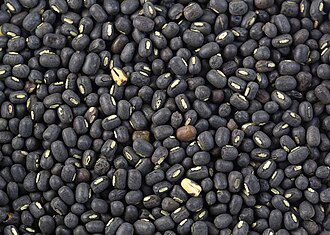
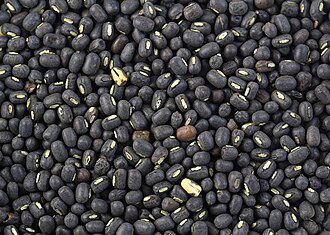
| Language | Name |
| Hindi | Urad Dal |
| Gujarati | Adad Dal |
| Bengali | Biuli Dal |
| Tamil | Ulundhu Paruppu |
| Telugu | Minapa Pappu |
| Marathi | Udid Dal |
| Kannada | Uddina Bele |
| Malayalam | Uzhunnu Parippu |
| Punjabi | Mah Di Dal |
| Odia | Biri Dal |
Nutritional Table (per 100g):
| Nutrient | Amount |
| Protein | 25g |
| Carbohydrates | 58g |
| Dietary Fiber | 18g |
| Calories | 341 kcal |
| Iron | 7.57 mg |
| Potassium | 983 mg |
| Magnesium | 138 mg |
| Folate | 216 mcg |
Health Benefits:
- High in Protein: Urad dal is a rich source of protein, making it an excellent addition to vegetarian and vegan diets. It supports muscle growth and repair, and is especially beneficial for individuals looking to increase their protein intake without consuming animal products.
- Boosts Digestive Health: The high fiber content in urad dal aids in maintaining a healthy digestive system. It promotes regular bowel movements, helps prevent constipation, and can aid in the management of digestive disorders like irritable bowel syndrome (IBS).
- Supports Heart Health: Urad dal contains significant amounts of magnesium and potassium, which are essential for maintaining cardiovascular health. These nutrients help regulate blood pressure and prevent conditions such as hypertension and heart disease.
- Rich in Iron: Urad dal is a good source of iron, which is crucial for the production of hemoglobin and the prevention of anemia. Regular consumption can improve energy levels and reduce fatigue, particularly in individuals with iron-deficiency anemia.
- Bone Health: Magnesium and calcium found in urad dal contribute to bone health. These minerals help in maintaining bone density and strength, reducing the risk of osteoporosis and other bone-related disorders.
“Netmeds details Urad Dal’s significance in Ayurveda, citing its digestive benefits, its role in bone and joint health, and its traditional use to boost immunity and reproductive health. It’s rich in minerals like magnesium, iron, and calcium, which support cardiovascular health and bone density”
5. Masoor Dal (Red Lentil)
Masoor dal, also known as red lentil, is a staple in many Indian households. Its vibrant orange-red color and soft texture when cooked make it a popular choice for soups, stews, and dal dishes. Masoor dal is quick to cook and does not require pre-soaking, making it a convenient option for quick meals. It has a slightly sweet and nutty flavor, which pairs well with a variety of spices and ingredients. Common dishes include masoor dal curry, dal tadka, and lentil salads.
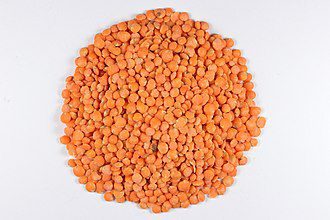
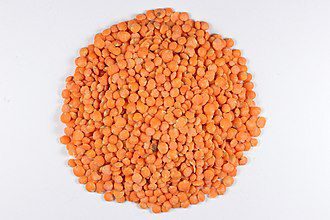
| Language | Name |
| Hindi | Masoor Dal |
| Gujarati | Masoor Dal |
| Bengali | Masoor Dal |
| Tamil | Mysore Paruppu |
| Telugu | Masoor Pappu |
| Marathi | Masoor Dal |
| Kannada | Masoor Bele |
| Malayalam | Masoor Parippu |
| Punjabi | Massar Di Dal |
| Odia | Masuri Dal |
Nutritional Table (per 100g):
| Nutrient | Amount |
| Protein | 25g |
| Carbohydrates | 60g |
| Dietary Fiber | 8g |
| Calories | 340 kcal |
| Iron | 6.6 mg |
| Potassium | 600 mg |
| Magnesium | 36 mg |
| Folate | 480 mcg |
| Vitamin B1 (Thiamine) | 0.5 mg |
Health Benefits:
- High in Protein: Masoor dal is a rich source of plant-based protein, essential for muscle repair and growth. It is particularly beneficial for vegetarians and vegans looking to meet their protein requirements.
- Rich in Iron: This dal is an excellent source of iron, which is crucial for the formation of hemoglobin and the prevention of anemia. Including masoor dal in your diet can help boost your iron levels and improve overall energy.
- Supports Heart Health: Masoor dal contains a significant amount of dietary fiber, which helps in lowering cholesterol levels. It also has a good balance of potassium and magnesium, which are vital for maintaining healthy blood pressure levels.
- Aids Digestion: The fiber content in masoor dal aids in digestion by adding bulk to the stool, thus preventing constipation and promoting regular bowel movements.
- Rich in Folate: Folate is essential for DNA synthesis and repair, making masoor dal a beneficial addition to the diet, especially for pregnant women to support fetal development.
- Quick and Easy to Cook: Unlike some other lentils, masoor dal cooks quickly and does not require pre-soaking, making it a convenient option for nutritious meals in a short time.
6. Arhar Dal (Split Yellow Pigeon Pea)
Arhar dal, also known as split yellow pigeon pea or toor dal, is a staple in many Indian households. It has a slightly nutty flavor and a firm texture, making it a versatile ingredient in Indian cuisine. Arhar dal is commonly used to prepare dal tadka, sambar, and various other traditional dishes. Its ability to blend well with spices and vegetables makes it a favorite for both everyday meals and festive occasions.
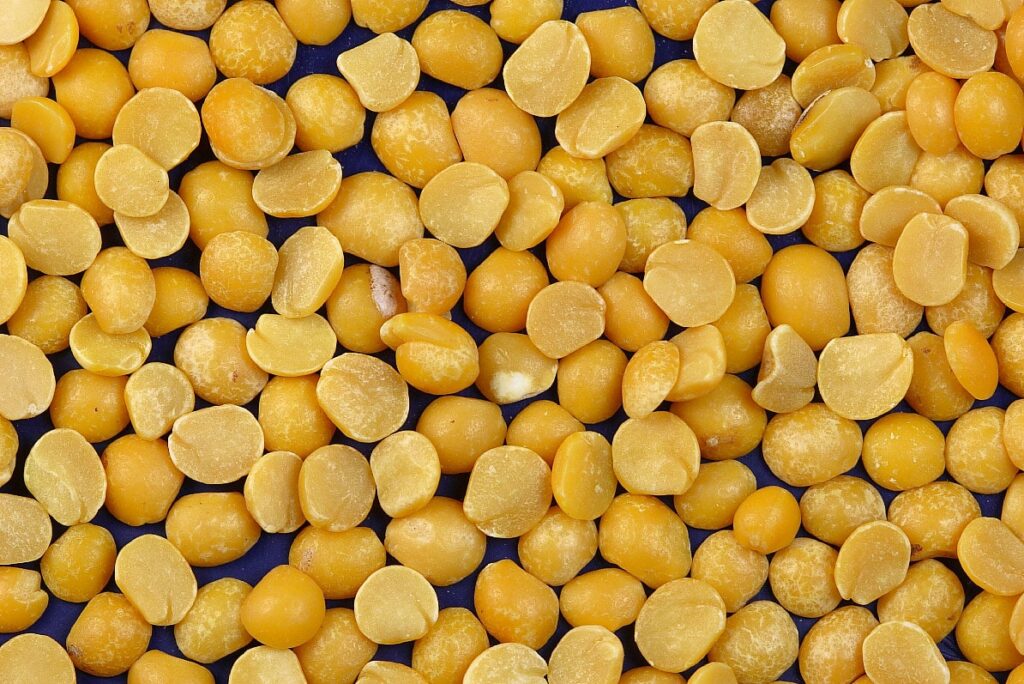
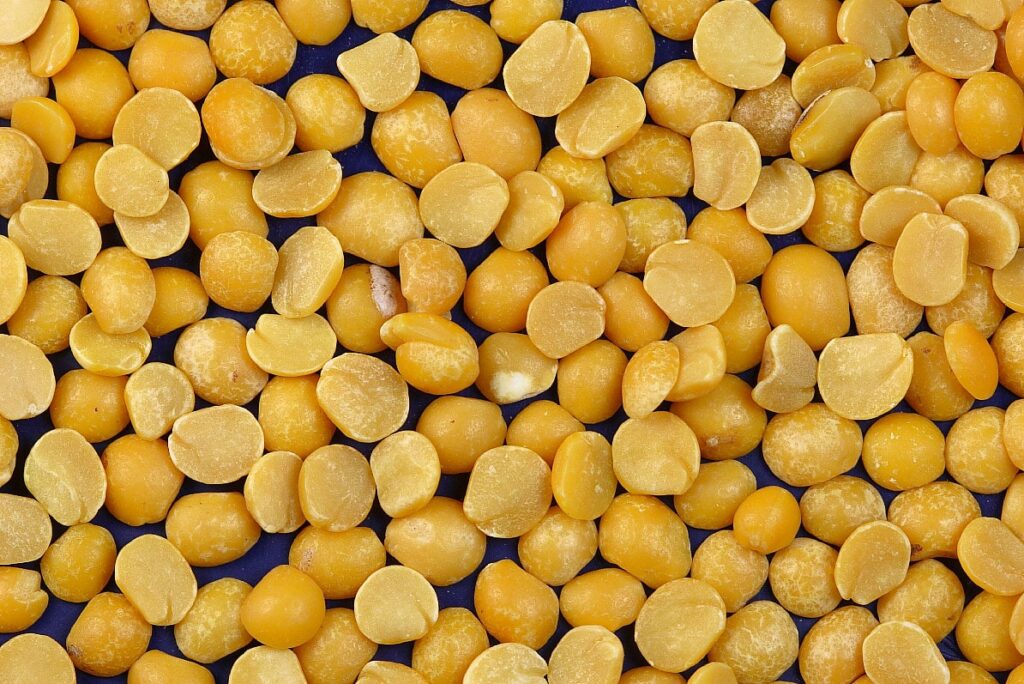
| Language | Name |
| Hindi | Arhar Dal |
| Gujarati | Tuver Dal |
| Bengali | Tur Dal |
| Tamil | Thuvaram Paruppu |
| Telugu | Kandi Pappu |
| Marathi | Tur Dal |
| Kannada | Togari Bele |
| Malayalam | Thuvara Parippu |
| Punjabi | Toor Di Dal |
| Odia | Kandula Dal |
Nutritional Table (per 100g):
| Nutrient | Amount |
| Protein | 22g |
| Carbohydrates | 63g |
| Dietary Fiber | 15g |
| Calories | 343 kcal |
| Iron | 4.3 mg |
| Potassium | 1392 mg |
| Magnesium | 130 mg |
| Folate | 173 mcg |
Health Benefits:
- Rich in Protein:
Arhar dal is a significant source of plant-based protein, crucial for muscle repair and growth. - High in Dietary Fiber:
The dietary fiber in arhar dal aids in maintaining digestive health. It helps regulate bowel movements, prevent constipation, and promote overall gut health. - Supports Heart Health:
The presence of potassium and magnesium in arhar dal helps regulate blood pressure and supports cardiovascular health. Regular consumption can help reduce the risk of heart disease. - Boosts Energy:
Arhar dal is rich in carbohydrates, providing a steady source of energy. It is especially beneficial for those needing sustained energy throughout the day. - Enhances Immunity:
The folate and iron content in arhar dal contribute to the production of red blood cells and enhance immune function. This is particularly beneficial for individuals with anemia or low iron levels. - Weight Management:
Being low in fat and high in fiber, arhar dal promotes a feeling of fullness, which can help with weight management by reducing overall calorie intake.
“According to the Times of India, arhar dal is rich in protein and dietary fiber, which helps in maintaining digestive health and regulating blood sugar levels in the article ‘Toor Dal Health Benefits’.”
7. Moth Dal (Matki)
Moth dal, also known as matki or Turkish gram, is a staple in many Indian households, especially in regions like Maharashtra and Rajasthan. This small, brownish lentil has a slightly earthy flavor and a firm texture, making it suitable for a variety of preparations. It is commonly used in sprouted form in salads, as well as in traditional dishes like usal, misal, and various curries. Moth dal is known for its high nutritional value and is often included in diets aimed at boosting protein and fiber intake.
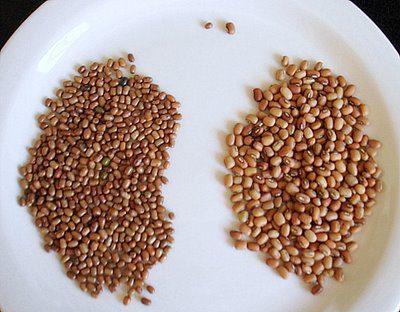
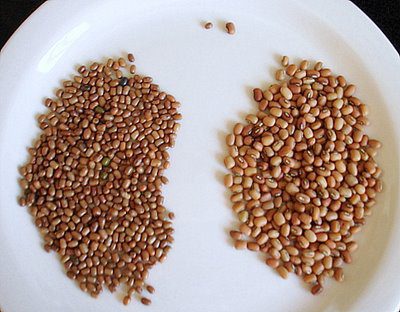
| Language | Name |
| Hindi | Moth Dal |
| Gujarati | Math Dal |
| Bengali | Mothi Dal |
| Tamil | Mochai |
| Telugu | Dento Pappu |
| Marathi | Matki Dal |
| Kannada | Moth Bele |
| Malayalam | Mothi Parippu |
| Punjabi | Moth Di Dal |
| Odia | Matara Dal |
Nutritional Table (per 100g):
| Nutrient | Amount |
| Protein | 23g |
| Carbohydrates | 57g |
| Dietary Fiber | 25g |
| Calories | 343 kcal |
| Iron | 8.6 mg |
| Potassium | 1246 mg |
| Magnesium | 43 mg |
| Folate | 479 mcg |
Health Benefits:
- High in Protein: Moth dal is an excellent source of plant-based protein, crucial for muscle repair and growth.
- Rich in Fiber: The high fiber content aids digestion, helps in maintaining regular bowel movements, and prevents constipation. It also supports overall gut health by promoting beneficial bacteria.
- Iron-Rich: Moth dal is a good source of iron, which is essential for the formation of hemoglobin and maintaining healthy red blood cells. This can help prevent anemia and improve overall energy levels.
- Promotes Heart Health: The potassium and magnesium in moth dal help regulate blood pressure and support heart health by reducing the risk of cardiovascular diseases.
- Supports Weight Management: Being low in calories and high in fiber, moth dal promotes satiety, helping with weight control and reducing the tendency to overeat.
- Boosts Immunity: The vitamins and minerals in moth dal, such as folate and magnesium, play a role in strengthening the immune system and supporting overall health.
8. Rajma Dal (Kidney Bean)
Rajma dal, or kidney beans, are a popular legume in Indian cuisine, particularly in North India. Known for their distinct kidney shape and deep red color, rajma beans have a slightly sweet and nutty flavor. They are often cooked with spices and served in a thick, rich curry, typically paired with rice, creating the beloved dish ‘rajma chawal’. Rajma is not only delicious but also packed with nutrients, making it a staple in many Indian households.
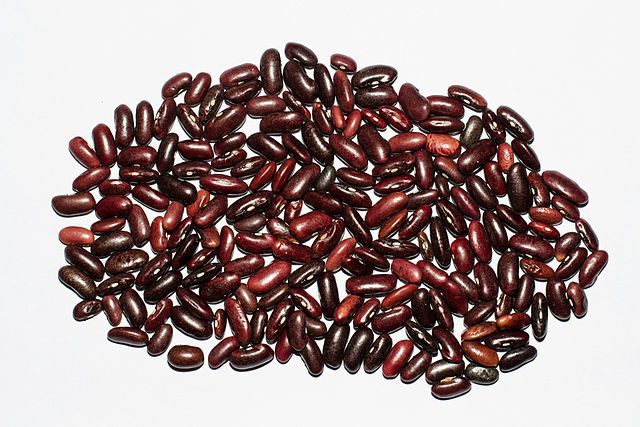
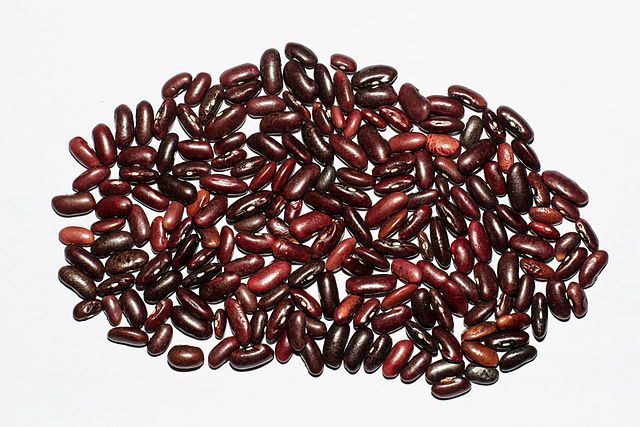
| Language | Name |
| Hindi | Rajma |
| Gujarati | Rajma |
| Bengali | Rajma |
| Tamil | Rajma |
| Telugu | Rajma |
| Marathi | Rajma |
| Kannada | Rajma |
| Malayalam | Rajma Parippu |
| Punjabi | Rajma |
| Odia | Rajma |
Nutritional Table (per 100g):
| Nutrient | Amount |
| Protein | 23g |
| Carbohydrates | 57g |
| Dietary Fiber | 25g |
| Calories | 343 kcal |
| Iron | 8.6 mg |
| Potassium | 1246 mg |
| Magnesium | 43 mg |
| Folate | 479 mcg |
Health Benefits:
- High in Protein: Rajma beans are an excellent source of plant-based protein, crucial for muscle repair and growth.
- Rich in Fiber: The high dietary fiber content in rajma aids in digestion, helps maintain bowel regularity, and prevents constipation.
- Lowers Cholesterol: The soluble fiber in kidney beans can help reduce cholesterol levels, thereby supporting heart health.
- Stabilizes Blood Sugar Levels: Rajma has a low glycemic index, which helps in stabilizing blood sugar levels, making it an ideal food choice for people with diabetes.
- Packed with Antioxidants: Kidney beans contain various antioxidants, including flavonoids and phenolic compounds, which help reduce oxidative stress and protect against chronic diseases.
- Supports Heart Health: The high potassium and magnesium content in rajma help regulate blood pressure and support cardiovascular health.
- Boosts Energy: Rajma beans are rich in iron, which is essential for the production of hemoglobin and energy metabolism, helping to combat fatigue and boost overall energy levels.
- Aids in Weight Management: Being high in fiber and protein, rajma promotes satiety, reduces appetite, and supports weight management.
“NDTV reported on the numerous health benefits of rajma dal, particularly its high fiber content that aids digestion and its role in managing blood sugar levels in the article ‘The Health Benefits of Kidney Beans’.”
9. Kabuli Chana (Chickpea)
Kabuli chana, commonly known as chickpea, is a popular legume widely used in Indian cuisine and around the world. This round, beige-colored bean has a slightly nutty flavor and firm texture, making it versatile for a variety of dishes. Kabuli chana is the star ingredient in dishes like chana masala, hummus, and salads. In India, it is often soaked overnight and cooked in a rich, spicy gravy or roasted with spices as a crunchy snack. Its high protein and fiber content make it a staple in vegetarian and vegan diets.
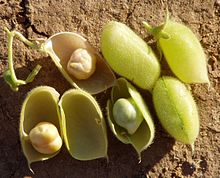
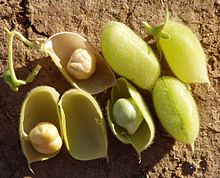
| Language | Name |
| Hindi | Kabuli Chana |
| Gujarati | Kabuli Chana |
| Bengali | Kabuli Chola |
| Tamil | Vellai Kondakadalai |
| Telugu | Kabuli Senaga |
| Marathi | Kabuli Chana |
| Kannada | Kabuli Kadale |
| Malayalam | Kabuli Kadala |
| Punjabi | Kabuli Chana |
| Odia | Kabuli Chana |
Nutritional Table (per 100g):
| Nutrient | Amount |
| Protein | 19g |
| Carbohydrates | 61g |
| Dietary Fiber | 17g |
| Calories | 364 kcal |
| Iron | 6.2 mg |
| Potassium | 875 mg |
| Magnesium | 79 mg |
| Folate | 557 mcg |
Health Benefits:
- High in Protein: Kabuli chana is a great plant-based protein source, crucial for muscle repair and overall growth.
- Rich in Dietary Fiber: The high fiber content aids in digestion, helps regulate blood sugar levels, and promotes a healthy gut.
- Boosts Heart Health: Chickpeas are rich in magnesium and potassium, which help maintain healthy blood pressure levels. The dietary fiber also helps reduce cholesterol levels, contributing to heart health.
- Supports Bone Health: Chickpeas are a good source of calcium, magnesium, and phosphate, all of which are important for maintaining strong bones and preventing osteoporosis.
- Enhances Mental Health: The high folate content in Kabuli chana is essential for brain function and mental health. Folate helps reduce the risk of depression and supports cognitive functions.
“According to the Harvard T.H. Chan School of Public Health, chickpeas are an excellent source of protein and dietary fiber, promoting heart health and aiding in weight management in their article ‘Chickpeas (Garbanzo Beans) – The Nutrition Source’.”
10. Kala Chana (Black Chickpea)
Kala chana, or black chickpeas, is a staple legume in Indian cuisine, known for its robust flavor and slightly nutty taste. Unlike its lighter counterpart, the regular chickpea, kala chana has a firmer texture and a darker hue, which is indicative of its higher nutrient content. This legume is often used in various dishes, including curries, salads, and snacks. In addition to being a dietary staple, black chickpeas are valued for their versatility, allowing them to be incorporated into various recipes, such as chana masala and sundal. Furthermore, they are a preferred choice for individuals looking to enhance their protein intake, making them particularly popular among vegetarians and health-conscious eaters.
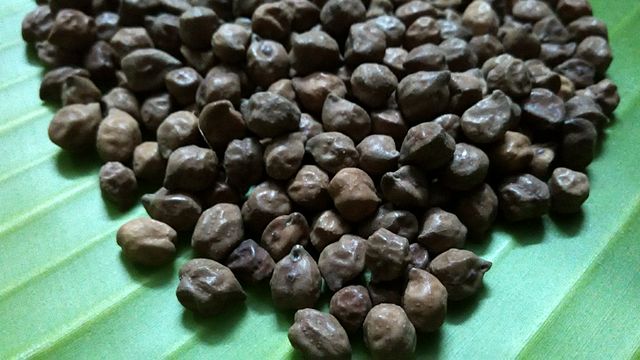
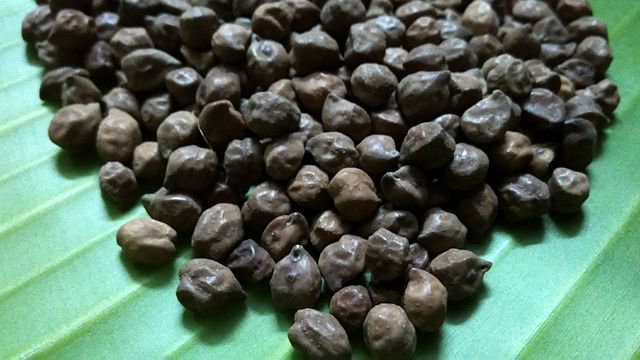
| Language | Name |
| Hindi | Kala Chana |
| Gujarati | Kala Chana |
| Bengali | Kalo Chola |
| Tamil | Karuppu Kondakadalai |
| Telugu | Nalla Senaga |
| Marathi | Kala Chana |
| Kannada | Kari Kadale |
| Malayalam | Karuppu Kadala |
| Punjabi | Kale Chane |
| Odia | Kala Chana |
Nutritional Table (per 100g):
| Nutrient | Amount |
| Protein | 22g |
| Carbohydrates | 60g |
| Dietary Fiber | 15g |
| Calories | 364 kcal |
| Iron | 4.3 mg |
| Potassium | 404 mg |
| Magnesium | 48 mg |
| Folate | 172 mcg |
Health Benefits:
- High in Protein:
Kala chana is an excellent source of plant-based protein, making it an essential part of vegetarian and vegan diets. The protein content is crucial for muscle repair and growth, providing the body with the necessary amino acids. - Rich in Dietary Fiber:
This legume is packed with dietary fiber, which is vital for digestive health. The fiber aids in maintaining regular bowel movements, preventing constipation, and promoting a feeling of fullness that can help with weight management. - Supports Heart Health:
Research shows that the high fiber and nutrient density of kala chana can help lower cholesterol levels and improve heart health. Its ability to regulate blood sugar levels also makes it beneficial for individuals with diabetes or those at risk of developing it. - Packed with Micronutrients:
Kala chana contains essential vitamins and minerals, such as iron, magnesium, and folate, which are important for overall health. Iron is crucial for the production of hemoglobin, while magnesium plays a role in muscle and nerve function. - Antioxidant Properties:
Black chickpeas are rich in antioxidants, which help protect the body from oxidative stress. - Promotes Weight Loss:
The combination of high fiber and protein content in kala chana contributes to a feeling of satiety, making it easier to manage hunger and support weight loss efforts. Incorporating kala chana into meals can help reduce overall calorie intake.
“Healthline discussed the advantages of black chickpeas, emphasizing their high fiber and protein content, which can support weight management and heart health in the article ‘Black Chickpeas: Nutritional Benefits’.”
11. Horse Gram Dal (Kulthi)
Horse gram dal, also known as Kulthi dal, is a lesser-known but highly nutritious legume native to the Indian subcontinent. It is often characterized by its small, round, reddish-brown seeds that have a slightly nutty flavor. Horse gram is widely used in traditional Indian dishes, particularly in South Indian and Maharashtrian cuisines. It can be prepared as a dal curry, sprouted for salads, or ground into flour for various recipes. This versatile pulse is praised not only for its culinary uses but also for its numerous health benefits, making it a valuable addition to a balanced diet.
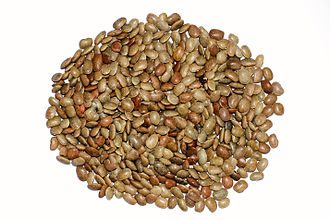
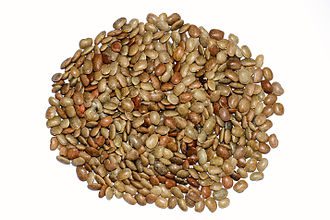
| Language | Name |
| Hindi | Kulath |
| Gujarati | Kulith |
| Bengali | Kurti Kalai |
| Tamil | Kollu |
| Telugu | Ulavalu |
| Marathi | Kulith |
| Kannada | Huruli |
| Malayalam | Muthira |
| Punjabi | Kulth |
| Odia | Kolatha |
Nutritional Table (per 100g):
| Nutrient | Amount |
| Protein | 22g |
| Carbohydrates | 57g |
| Dietary Fiber | 12g |
| Calories | 321 kcal |
| Iron | 6.6 mg |
| Potassium | 770 mg |
| Calcium | 60 mg |
| Magnesium | 70 mg |
| Folate | 200 mcg |
Health Benefits:
- Rich in Protein:
Horse gram dal is an excellent source of plant-based protein, making it ideal for vegetarians and vegans. - Supports Weight Loss:
Due to its high fiber content, horse gram dal helps increase feelings of fullness, reducing overall calorie intake. This can aid in weight management and prevent overeating. - Improves Digestive Health:
The dietary fiber present in horse gram promotes healthy digestion by preventing constipation and supporting regular bowel movements. It also helps maintain a healthy gut microbiome. - Regulates Blood Sugar Levels:
Horse gram has a low glycemic index, making it suitable for those managing diabetes. Its fiber content slows down the absorption of sugars, preventing spikes in blood sugar levels. - Boosts Heart Health:
The antioxidants found in horse gram help lower cholesterol levels and reduce the risk of heart disease. Additionally, potassium helps regulate blood pressure, further supporting cardiovascular health. - Anti-Inflammatory Properties:
Research suggests that horse gram may have anti-inflammatory properties that can help reduce the risk of chronic diseases associated with inflammation, such as arthritis and heart disease. - Enhances Immunity:
Packed with vitamins and minerals, horse gram dal can boost the immune system, helping the body fight off infections and diseases.
“The Times of India highlighted the numerous health benefits of horse gram, including its high protein content and ability to aid weight loss in their article on this nutritious legume.”
12. Black-Eyed Pea Dal (Lobia)
Black-eyed pea dal, also known as lobia, is a popular legume in Indian cuisine. These beans are recognizable by their characteristic black spot on a cream-colored body. Lobia has a distinct, earthy flavor and a slightly firm texture, making it a versatile ingredient in various dishes. It is commonly used in curries, salads, and soups, and can also be enjoyed as a simple, nutritious side dish. The dal is often paired with rice or roti, creating a balanced and hearty meal.
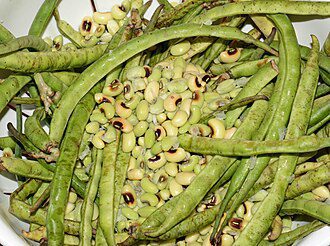
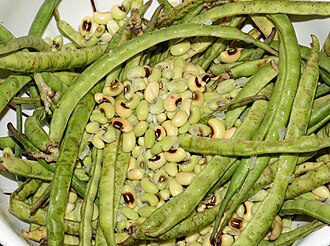
| Language | Name |
| Hindi | Lobia |
| Gujarati | Choli |
| Bengali | Barbati |
| Tamil | Karamani |
| Telugu | Alasandalu |
| Marathi | Chavli |
| Kannada | Alsande |
| Malayalam | Vanpayar |
| Punjabi | Raungi |
| Odia | Baragudi |
Nutritional Table (per 100g):
| Nutrient | Amount |
| Protein | 8g |
| Carbohydrates | 21g |
| Dietary Fiber | 7g |
| Calories | 123 kcal |
| Iron | 4.3 mg |
| Potassium | 278 mg |
| Magnesium | 56 mg |
| Folate | 356 mcg |
Health Benefits:
- Rich in Protein: Black-eyed pea dal provides a good source of plant-based protein, essential for muscle repair and growth.
- High in Fiber: The dietary fiber content in lobia aids in digestion, promotes regular bowel movements, and helps prevent constipation.
- Supports Heart Health: Lobia is low in fat and rich in potassium, which helps in maintaining healthy blood pressure levels. The fiber in black-eyed peas also contributes to lowering cholesterol levels.
- Boosts Iron Levels: With a significant amount of iron, black-eyed pea dal helps in preventing anemia and promotes healthy red blood cell production. This is particularly beneficial for individuals with higher iron needs, such as pregnant women.
- Improves Blood Sugar Control: The complex carbohydrates and fiber in lobia help in stabilizing blood sugar levels, making it a suitable option for individuals with diabetes or those looking to manage their blood sugar.
- Promotes Bone Health: The magnesium content in black-eyed pea dal is essential for maintaining healthy bones and preventing bone-related disorders.
13. Soybean Dal
Soybean dal, derived from the soybean (Glycine max), is a versatile legume widely cultivated and consumed across India. Known for its nutty flavor and firm texture, it serves as an excellent plant-based protein source. Soybean dal is often used in various Indian dishes, including curries, stir-fries, and as an ingredient in vegetarian burgers and snacks. Rich in isoflavones, it offers not just nutritional benefits but also contributes to the culinary richness of Indian cuisine. Additionally, soybean dal can be easily sprouted, which enhances its nutritional profile and makes it easier to digest.
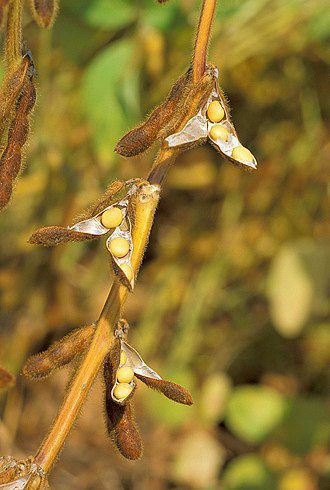

| Language | Name |
| Hindi | Soyabean |
| Gujarati | Soyabean |
| Bengali | Soyabean |
| Tamil | Soyabean |
| Telugu | Soyabean |
| Marathi | Soyabean |
| Kannada | Soyabean |
| Malayalam | Soyabean |
| Punjabi | Soyabean |
| Odia | Soyabean |
Nutritional Table (per 100g):
| Nutrient | Amount |
| Protein | 36g |
| Carbohydrates | 30g |
| Dietary Fiber | 9g |
| Calories | 446 kcal |
| Iron | 15.7 mg |
| Potassium | 280 mg |
| Magnesium | 280 mg |
| Folate | 375 mcg |
| Calcium | 277 mg |
Health Benefits:
- High Protein Content: Soybean dal is one of the richest sources of plant-based protein, making it an excellent option for vegetarians and vegans. It helps in muscle repair, growth, and overall body function, supporting a healthy lifestyle.
- Heart Health: The presence of polyunsaturated fats, especially omega-3 fatty acids, can help reduce cholesterol levels and promote heart health. Studies suggest that regular consumption of soy products may lower the risk of heart disease.
- Rich in Isoflavones: Soybeans are a significant source of isoflavones, compounds that mimic estrogen in the body. These may help reduce menopausal symptoms in women and provide protective effects against certain cancers, particularly breast cancer.
- Bone Health: The calcium and magnesium in soybean dal contribute to bone strength and density. Regular consumption can be beneficial in preventing osteoporosis and maintaining overall skeletal health.
- Supports Weight Management: High in protein and fiber, soybean dal can enhance feelings of fullness and reduce overall calorie intake. This can be particularly helpful for those looking to maintain or lose weight.
- Digestive Health: The fiber content in soybean dal aids in promoting healthy digestion by preventing constipation and maintaining regular bowel movements. A diet rich in fiber is essential for gut health.
“The Hindu discussed the health advantages of soybean, particularly its role in heart health and muscle repair, in their feature on plant-based diets.”
14. Green Pea Dal
Green pea dal, commonly known as green pea lentils, is made from dried green peas. This legume is celebrated not only for its sweet and earthy flavor but also for its vibrant green color, which adds a refreshing touch to various dishes. In Indian cuisine, green pea dal is often used in curries, soups, and side dishes, making it a versatile ingredient. Its slightly sweet taste pairs well with spices, making it a popular choice for both savory and sweet preparations. Green pea dal is particularly favored during winters and is known for its warming properties. Additionally, it is easy to cook, requiring less time than other legumes, making it a convenient option for quick meals.
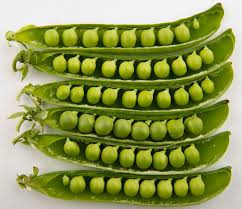
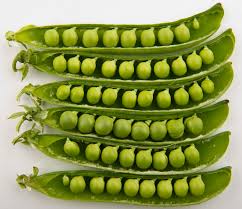
| Language | Name |
| Hindi | Matar |
| Gujarati | Vatana |
| Bengali | Motor |
| Tamil | Pattani |
| Telugu | Batani |
| Marathi | Vatana |
| Kannada | Batani |
| Malayalam | Pattani Parippu |
| Punjabi | Matar |
| Odia | Matar |
Nutritional Table (per 100g):
| Nutrient | Amount |
| Protein | 5.4g |
| Carbohydrates | 14g |
| Dietary Fiber | 5.5g |
| Calories | 81 kcal |
| Iron | 1.5 mg |
| Potassium | 244 mg |
| Magnesium | 25 mg |
| Folate | 68 mcg |
Health Benefits:
- Rich Source of Plant-Based Protein: Green pea dal is a good source of protein, making it an excellent choice for vegetarians and vegans. It supports muscle repair and growth, which is crucial for active individuals and those involved in strength training.
- High in Dietary Fiber: The high fiber content in green pea dal aids in digestion and helps maintain regular bowel movements. It promotes gut health by preventing constipation and supports the growth of beneficial gut bacteria.
- Supports Heart Health: Green peas contain antioxidants like flavonoids and polyphenols, which help reduce inflammation and oxidative stress in the body. These compounds contribute to heart health by lowering cholesterol levels and improving overall cardiovascular function.
- Regulates Blood Sugar Levels: Green pea dal has a low glycemic index, which means it causes a gradual increase in blood sugar levels rather than a rapid spike. This property makes it a suitable option for individuals managing diabetes.
- Boosts Immunity: The vitamins and minerals found in green pea dal, such as vitamin C and zinc, play a vital role in boosting the immune system.
15. White Pea Dal (Safed Vatana)
White Pea Dal, commonly known as Safed Vatana in India, is a staple legume that is versatile and widely used in various Indian dishes. This dal is known for its subtle, earthy flavor and firm texture, which makes it ideal for curries, stews, and street food snacks such as ragda patties. White peas are often soaked and cooked in spices to make flavorful dishes, and they are a common ingredient in Indian states like Maharashtra and Gujarat. Due to its firm structure, White Pea Dal holds up well in hearty recipes and pairs excellently with a range of spices and vegetables.
| Language | Name |
| Hindi | Safed Matar |
| Gujarati | Safed Vatana |
| Bengali | Sada Motor |
| Tamil | Vellai Pattani |
| Telugu | Tella Batani |
| Marathi | Pandhra Vatana |
| Kannada | Bili Batani |
| Malayalam | Vella Pattani |
| Punjabi | Chitta Matar |
| Odia | Dhala Matar |
Nutritional Table (per 100g):
| Nutrient | Amount |
| Protein | 21g |
| Carbohydrates | 62g |
| Dietary Fiber | 25g |
| Calories | 343 kcal |
| Iron | 4.8 mg |
| Potassium | 900 mg |
| Magnesium | 44 mg |
| Folate | 350 mcg |
Health Benefits:
- High in Fiber: White Pea Dal is an excellent source of dietary fiber, which supports digestive health by promoting regular bowel movements and helping prevent constipation. Its high fiber content also aids in maintaining healthy cholesterol levels.
- Rich in Protein: A plant-based protein source, White Pea Dal is beneficial for muscle growth, tissue repair, and overall bodily functions.
- Supports Heart Health: The potassium and magnesium in White Pea Dal help regulate blood pressure and maintain heart health. Potassium aids in balancing the effects of sodium in the body, helping to relax blood vessels and reduce hypertension.
- Good for Weight Management: With a low calorie count and high fiber content, White Pea Dal promotes a sense of fullness, helping to reduce hunger cravings. This makes it a suitable addition to diets aimed at weight control.
- Boosts Energy Levels: White peas provide a steady source of carbohydrates, offering sustained energy and helping to prevent energy dips throughout the day. The iron content also supports healthy blood production and helps prevent anemia.
16. Moong Chilka Dal (Split Green Gram)
Moong Chilka Dal, or split green gram, is a versatile and popular lentil in Indian cuisine. Unlike whole green gram, this dal is split with the skin on, giving it a unique flavor and texture. The dal has a slightly earthy taste and can be used in various dishes, from simple curries and soups to traditional recipes like dal tadka. Due to its mild flavor and ease of digestion, Moong Chilka Dal is a preferred choice for those seeking a light and nutritious meal. Additionally, it’s often recommended for individuals recovering from illness or looking for easy-to-digest protein options.
| Language | Name |
| Hindi | Moong Chilka |
| Gujarati | Mag Chilka |
| Bengali | Mug Chilka |
| Tamil | Pasi Paruppu Chilka |
| Telugu | Pesara Pappu Chilka |
| Marathi | Muga Chilka |
| Kannada | Hesaru Bele Chilka |
| Malayalam | Cherupayar Chilka |
| Punjabi | Moong Chilka |
| Odia | Muga Chilka |
Nutritional Table (per 100g):
| Nutrient | Amount |
| Protein | 24g |
| Carbohydrates | 59g |
| Dietary Fiber | 16g |
| Calories | 334 kcal |
| Iron | 6.7 mg |
| Potassium | 850 mg |
| Magnesium | 54 mg |
| Folate | 479 mcg |
Health Benefits:
- Rich in Protein:
Moong Chilka Dal is an excellent plant-based protein source, making it a vital component of vegetarian and vegan diets. Protein supports muscle repair, immune function, and tissue development, helping to maintain a balanced diet without the need for animal protein sources. - Supports Digestive Health:
With its high fiber content, Moong Chilka Dal aids digestion and promotes regular bowel movements. The fiber also helps in preventing digestive issues such as constipation, supporting gut health, and promoting a healthy microbiome. - Regulates Blood Sugar Levels:
Due to its low glycemic index and high fiber content, Moong Chilka Dal helps regulate blood sugar levels, making it an ideal choice for individuals with diabetes. The gradual release of energy helps in stabilizing blood glucose levels, avoiding spikes and crashes. - Heart Health:
The high potassium content in Moong Chilka Dal contributes to heart health by helping to manage blood pressure. Additionally, the antioxidants present in the dal aid in reducing inflammation and maintaining cardiovascular health, lowering the risk of heart disease. - Weight Management:
Moong Chilka Dal is a low-calorie, high-fiber food that promotes satiety, which can help in weight management. Its protein content helps keep you fuller for longer, preventing overeating and unnecessary snacking, making it a great addition to weight-loss diets. - High in Essential Nutrients:
The dal is packed with essential vitamins and minerals like iron, magnesium, and folate, which are crucial for energy production, muscle function, and red blood cell formation. Folate is especially important for pregnant women as it supports fetal development and prevents neural tube defects.
17. Adzuki Bean Dal
Adzuki bean dal, commonly known as red beans, is a small red legume popular in Asian and Indian cuisines. Known for its sweet, nutty flavor and vibrant color, adzuki beans are versatile and can be used in both savory and sweet recipes. Traditionally, adzuki beans are used in soups, curries, and even desserts like sweet adzuki bean paste. In Indian cuisine, adzuki beans are valued for their ease of cooking and rich nutritional profile, making them a favored choice for a protein-packed dal. Unlike some other legumes, adzuki beans are easier to digest and don’t require long soaking periods, which adds to their popularity.
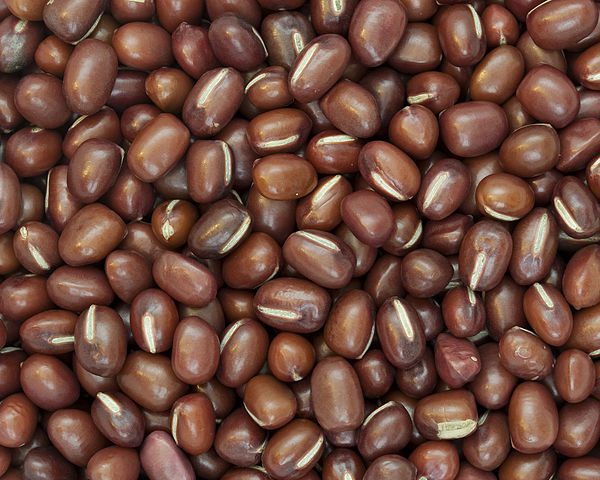
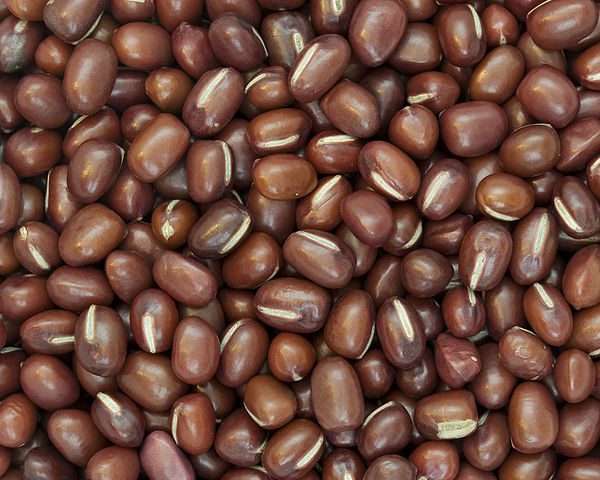
| Language | Name |
| Hindi | Red Chori |
| Gujarati | Lal Chori |
| Bengali | Red Chori |
| Tamil | Sigappu Sundal |
| Telugu | Erupa Chikkudu |
| Marathi | Lal Chori |
| Kannada | Kempu Kadale |
| Malayalam | Adzuki Bean |
| Punjabi | Lal Chori |
| Odia | Adzuki Bean |
Nutritional Table (per 100g):
| Nutrient | Amount |
| Protein | 20g |
| Carbohydrates | 62g |
| Dietary Fiber | 12g |
| Calories | 329 kcal |
| Iron | 5 mg |
| Potassium | 1254 mg |
| Magnesium | 120 mg |
| Folate | 278 mcg |
Health Benefits:
- High in Plant-Based Protein:
Adzuki bean dal provides an impressive amount of protein, making it an excellent choice for vegetarians and vegans seeking plant-based protein sources. Its amino acid profile supports muscle growth, tissue repair, and overall bodily function. - Rich in Antioxidants and Polyphenols:
The deep red color of adzuki beans signifies a high antioxidant content, particularly anthocyanins and flavonoids, which have been shown to reduce oxidative stress in the body. These antioxidants combat free radicals, support heart health, and may even have anti-aging properties. - Supports Heart Health:
Adzuki beans contain a balanced mix of potassium, magnesium, and fiber, all of which contribute to a healthy heart. Potassium and magnesium work to regulate blood pressure levels, while dietary fiber helps reduce cholesterol, decreasing the risk of heart disease. - Promotes Digestive Health:
Adzuki beans are an excellent source of dietary fiber, which aids in digestion by improving bowel regularity and reducing constipation. The soluble fiber also serves as a prebiotic, feeding beneficial gut bacteria and promoting gut health. - Helps Manage Blood Sugar Levels:
The low glycemic index of adzuki beans makes them a smart choice for people managing diabetes or insulin resistance. The slow-release carbohydrates help in stabilizing blood sugar levels, providing sustained energy without causing sharp spikes in glucose. - Supports Weight Loss and Satiety:
Adzuki beans are low in fat, high in protein, and rich in fiber, making them highly filling. Consuming foods like adzuki beans can lead to greater satiety, which helps with portion control and weight management over time.
“Healthline provided insights into the health benefits of adzuki beans, emphasizing their antioxidant properties and support for digestive health.”
18. Winged Bean Dal
Winged bean dal, derived from the nutrient-rich winged bean plant, is a less commonly known but highly nutritious legume in Indian cuisine. The winged bean, with its distinctive four-edged pods, grows well in tropical regions and has a mild, earthy flavor that blends seamlessly in a variety of dishes. This dal can be cooked as a thick soup, mixed into curries, or used as a base in stews. With its soft texture after cooking, winged bean dal makes an excellent addition to vegetarian diets, providing a wealth of essential nutrients.
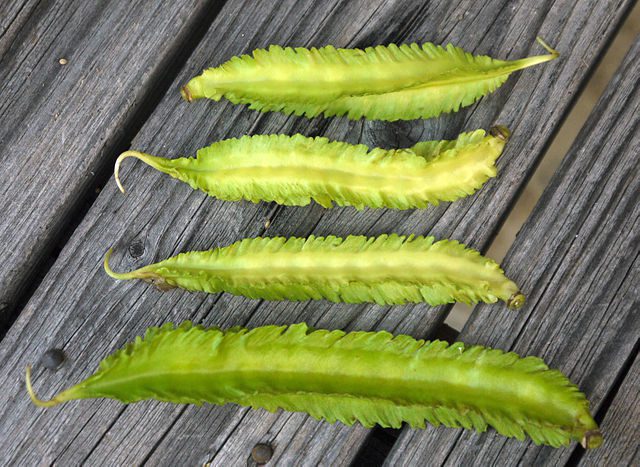
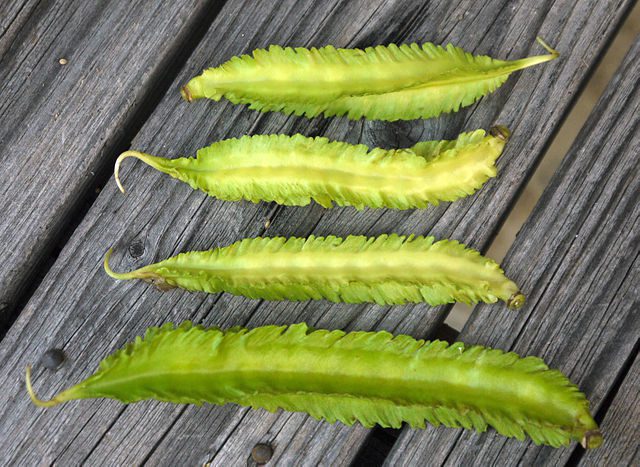
| Language | Name |
| Hindi | Chota Sem |
| Gujarati | Winged Bean |
| Bengali | Winged Bean |
| Tamil | Siragu Avarai |
| Telugu | Rekka Chikkudu |
| Marathi | Winged Bean |
| Kannada | Rekke Avare |
| Malayalam | Chathura Payar |
| Punjabi | Winged Bean |
| Odia | Winged Bean |
Nutritional Table (per 100g)
| Nutrient | Amount |
| Protein | 30g |
| Carbohydrates | 50g |
| Dietary Fiber | 10g |
| Calories | 370 kcal |
| Iron | 12 mg |
| Potassium | 870 mg |
| Calcium | 150 mg |
| Magnesium | 50 mg |
| Folate | 150 mcg |
Health Benefits
- Excellent Protein Source: Winged bean dal is an exceptional plant-based protein source, delivering high-quality amino acids. This makes it beneficial for muscle repair, energy production, and overall body maintenance, especially for those on vegetarian or vegan diets.
- Rich in Iron: With 12 mg of iron per 100g, winged bean dal supports red blood cell production and helps prevent anemia. Iron is essential for transporting oxygen throughout the body, boosting energy levels, and maintaining immune health.
- Bone Health Support: High calcium content (150 mg) in winged bean dal strengthens bones and teeth, promoting skeletal health. This is particularly advantageous for individuals at risk of osteoporosis or calcium deficiency.
- Heart Health: The potassium content (870 mg) in winged bean dal aids in regulating blood pressure and heart function. Potassium helps reduce the effects of sodium, keeping the heart healthy and reducing the risk of hypertension.
- Aids Digestion: Dietary fiber in winged bean dal supports digestive health by promoting regular bowel movements and preventing constipation. The fiber also encourages healthy gut bacteria, which is essential for a balanced digestive system.
- Folate Boost: Winged bean dal is rich in folate, a vital nutrient for cell growth and function. Folate is particularly beneficial for pregnant women as it supports fetal development and reduces the risk of neural tube defects.
19. Masoor Whole Dal (Whole Red Lentil)
Masoor Whole Dal, commonly known as whole red lentil, is a versatile and nutrient-rich dal that holds a significant place in Indian kitchens. Unlike split masoor dal, the whole version retains its outer skin, offering a slightly earthy flavor and a dense, hearty texture. Its reddish-brown hue is visually appealing, and it is widely used in various Indian dishes such as dals, soups, and stews. The dal cooks relatively quickly, even without soaking, making it a convenient choice for quick and wholesome meals. Masoor Whole Dal is enjoyed across the globe for its unique taste and is particularly popular among vegetarians as an essential source of protein.
| Language | Name |
| Hindi | Sabut Masoor |
| Gujarati | Akhi Masoor |
| Bengali | Sabut Masoor |
| Tamil | Muzhu Mysore Paruppu |
| Telugu | Masoor Pappu Ginjalu |
| Marathi | Akha Masoor |
| Kannada | Masoor Bele Kaayi |
| Malayalam | Muzhu Masoor |
| Punjabi | Sabit Massar |
| Odia | Masuri Dana |
Nutritional Table (per 100g):
| Nutrient | Amount |
| Protein | 25g |
| Carbohydrates | 60g |
| Dietary Fiber | 8g |
| Calories | 345 kcal |
| Iron | 7.6 mg |
| Potassium | 900 mg |
| Magnesium | 47 mg |
| Folate | 450 mcg |
Health Benefits:
- Excellent Source of Protein: Masoor Whole Dal is a high-protein legume, essential for muscle growth and repair. It is especially beneficial for those following vegetarian or vegan diets.
- Rich in Iron: The iron content in whole red lentils helps support the production of red blood cells and prevents anemia, making it a beneficial dal for those with iron deficiency.
- Boosts Heart Health: Masoor Whole Dal contains significant levels of potassium and magnesium, which help manage blood pressure and reduce the risk of cardiovascular diseases. These minerals, combined with dietary fiber, contribute to lowering cholesterol levels.
- Supports Weight Management: The dietary fiber in Masoor Whole Dal promotes a feeling of fullness, helping to control appetite and manage weight effectively. It’s low in calories yet filling, which can aid in maintaining a healthy body weight.
- Regulates Blood Sugar Levels: Whole red lentils have a low glycemic index, which prevents rapid spikes in blood sugar levels. This property makes it ideal for individuals managing diabetes or those who need to monitor their blood glucose levels.
- Promotes Digestive Health: The fiber in Masoor Whole Dal supports digestive health by aiding regular bowel movements and preventing constipation. It nourishes gut bacteria, promoting a healthy microbiome.
- Improves Skin and Hair Health: The folate, iron, and protein content in Masoor Whole Dal contribute to improved skin tone, hair strength, and overall vitality. Folate aids in cell regeneration, while protein helps in tissue repair, making it beneficial for skin and hair.
Conclusion
The diversity of dals in Indian cuisine not only offers an array of flavors but also provides numerous health benefits that enhance our overall well-being. By incorporating various types of dal into your meals, you can achieve a balanced intake of proteins, fibers, and essential nutrients that support heart health, digestion, and muscle growth. Exploring Kerala Food Recipes allows you to discover delightful ways to prepare these nutritious lentils while celebrating the rich culinary traditions of Kerala. For an even broader selection of authentic recipes, visit Pachakam.com, your go-to resource for traditional Kerala cooking and much more. Embrace the versatility of dals and enjoy the health benefits they bring to your table!

